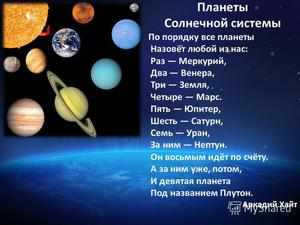
The solar system is our cosmic neighborhood, and the planets reside within it. It is only fitting that each planet has its own unique name.
Within this article, you will discover the precise positioning of the planets and the reasoning behind their individual names.
Let’s commence with the Sun.
Today’s focal point is the Sun. It received its name, according to certain sources, as a tribute to the Roman deity Sol, who represented the celestial luminary. The root sol can be found in nearly all languages worldwide and in some way or another evokes associations with the contemporary concept of the Sun.
Starting from this celestial body, the proper arrangement of entities commences, each possessing its own distinct qualities.
Mercury
The initial object deserving of our attention is Mercury, which derives its name from the divine messenger Mercury, renowned for his astonishing swiftness. And Mercury itself is far from sluggish; due to its position, it completes a revolution around the Sun faster than any other planet in our system, serving as the smallest satellite encircling our celestial body.
Fascinating details:
- Mercury follows an elliptical orbit around the Sun, unlike the other planets that follow a circular orbit, and this orbit is constantly shifting.
- Mercury possesses an iron core that constitutes 40% of its mass and 83% of its volume.
- Mercury is visible in the sky without the aid of any instruments.
Venus
The second planet in our solar system. Venus was named after the goddess, who is known as the beautiful patroness of love. Venus is slightly smaller than Earth. Its atmosphere is composed primarily of carbon dioxide, with trace amounts of oxygen.
Fascinating details:
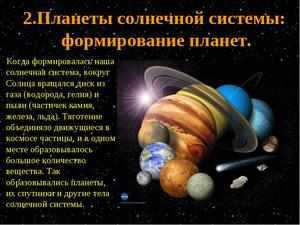

- Venus, just like Mercury, is observable to the naked eye.
- The temperature on Venus’s surface can reach a scorching 475 degrees Celsius, making it the hottest object.
- 70% of Venus’s surface is covered in water, while the remaining 30% consists of fully-fledged continents. Unless they are devoid of life.
Earth
The third planet in our solar system, Earth is the only known space object that supports life. It provides all the necessary conditions for living organisms, including suitable temperature, oxygen, and water. The name of our planet, Earth, derives from the Slavic root “zem,” which means low. This name may have originated from the belief in ancient times that the Earth was flat, or “low” in comparison to the heavens.
Interesting facts:
- Earth’s satellite, the Moon, is the largest among the satellites of the terrestrial group of dwarf planets.
- Earth is the densest planet in the terrestrial group.
- Earth and Venus are sometimes referred to as sisters because they both have atmospheres.
Mars
The planet Mars is referred to as the fourth planet from the Sun. It earned its name from the ancient Roman god of war due to its distinctive red color, which is not related to blood but rather to its high iron content. This iron-rich composition is what gives Mars its characteristic red appearance. While Mars is smaller in size compared to Earth, it is accompanied by two moons, namely Phobos and Deimos.
Fascinating details:
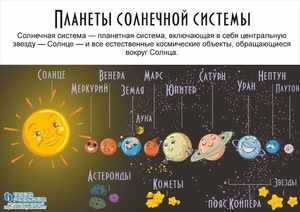

- Mars is accompanied by formidable satellites in its orbit, appropriately named Phobos and Deimos, which mean fear and terror in Latin.
- There is a belief that Mars either currently harbors life or had it in the distant past, sparked by the discovery of water on the planet.
- Mars has been extensively studied, second only to our own planet, Earth.
The asteroid belt
The region known as the asteroid belt is located between the planets Mars and Jupiter. This area serves as a dividing line between the inner rocky planets and the outer gas giants. Certain experts hypothesize that the asteroid belt is merely the remnants of a planet that broke apart into pieces. However, the prevailing belief is that the asteroid belt is a result of the cosmic event known as the Big Bang, which gave rise to our galaxy.
Jupiter: The Giant of the Solar System
Jupiter, the fifth planet from the Sun, is a true behemoth in our galaxy. It holds the distinction of being two and a half times more massive than all the other planets combined. This massive size has earned it the name Jupiter, after the ancient Roman king of the gods, who was known for his imposing presence.
Did you know?
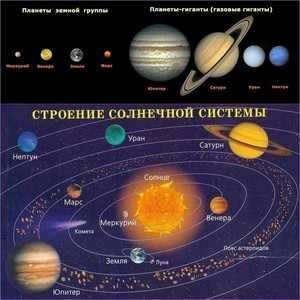

- There are numerous scientific discussions surrounding Jupiter. Some researchers propose that Jupiter is an unsuccessful star. In order to become one, it would need to increase its current weight by 88 times.
- Mapping the distribution of satellites around Jupiter is a very challenging task due to the large number of satellites orbiting it, up to 67. This is the highest number recorded in our solar system. Four of these satellites, Ganymede, Europa, Io, and Callisto, could be classified as dwarf planets. Ganymede is even larger than Mercury!
- Jupiter’s satellite Io is one of the three satellites that have an atmosphere.
Saturn
Saturn is known as the Roman god of agriculture. The sickle is the symbol associated with Saturn. This sixth planet in the solar system is famous for its magnificent rings. Interestingly, Saturn has the lowest density among all the natural satellites orbiting the Sun, even lower than that of water.
Did you know?
- Saturn boasts a total of 62 satellites. Some of the most well-known ones include Titan, Enceladus, Japetus, Dione, Tefia, Rhea, and Mimas.
- Among Saturn’s satellites, Titan stands out for having the most substantial atmosphere in the entire system, while Rhea possesses its own set of rings similar to Saturn itself.
- The chemical composition of the Sun and Saturn is remarkably similar compared to other objects in the solar system.
Uranus
The seventh planet in our solar system. Uranus is sometimes referred to as the “lazy planet” due to its unique rotation, where it lies on its side with an axis tilt of 98 degrees. Additionally, Uranus is the lightest planet in our system. Its moons are named after characters from the works of William Shakespeare and Alexander Pope. The planet itself is named after the Greek god of the sky.
Did you know?
- Uranus has a total of 27 known moons, with the most well-known being Titania, Ariel, Umbriel, and Miranda.
- The temperature on Uranus can drop to as low as -224 degrees Celsius.
- One year on Uranus is equivalent to 84 Earth years.
Neptune
The planet Neptune, which is the eighth and final planet in our solar system, is in close proximity to its neighboring planet Uranus. This majestic celestial body was named after the mighty god of the seas and oceans. The name “Neptune” was chosen due to the striking deep blue hue that researchers observed on this mesmerizing planet.
Fascinating Trivia:
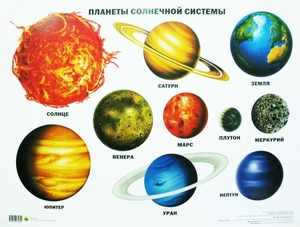

- Contrary to the other planets in the solar system, Neptune’s discovery was made through mathematical calculations rather than direct observations.
- With only 14 satellites, Neptune has a relatively low number of companions for a gas giant.
- Triton, which orbits Neptune, is the third moon in the solar system to possess an atmosphere.
Pluto ceased to be classified as a planet in August 2006, officially losing its planetary status. It was determined to be too small and reclassified as an asteroid. The name “Pluto” does not derive from any deity. The astronomer who discovered this celestial body, which is now considered an asteroid, named it after his daughter’s beloved cartoon character, Pluto the dog.
In this article, we have provided a brief overview of the planetary arrangement. We trust that you have found this article to be valuable and informative.
The solar system consists of several planets, each with its own unique characteristics and names. 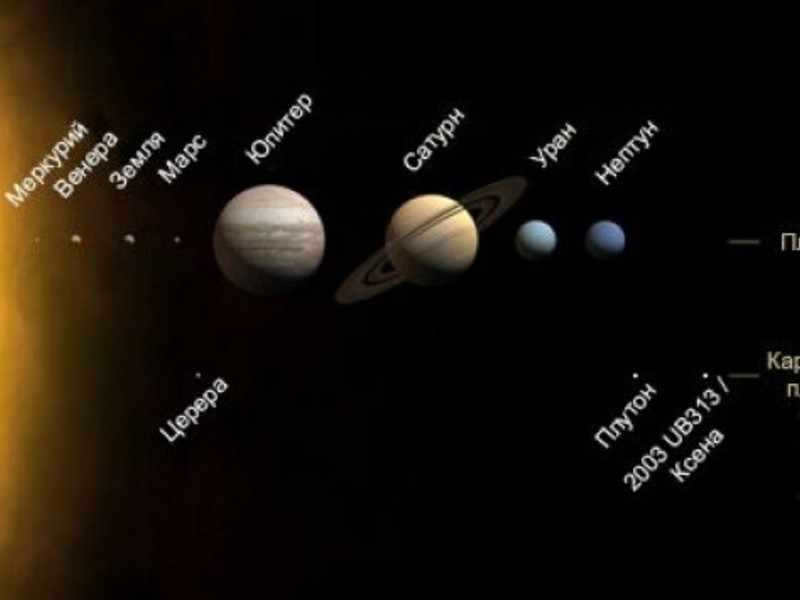
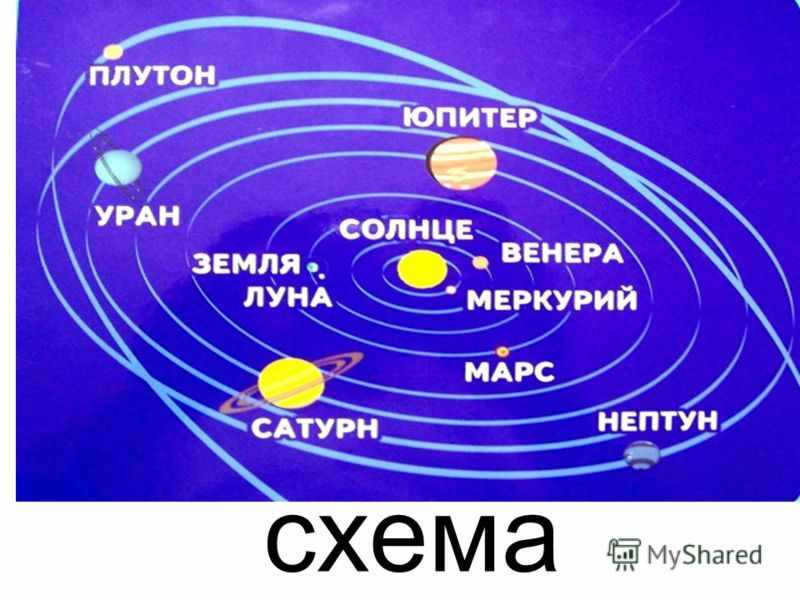
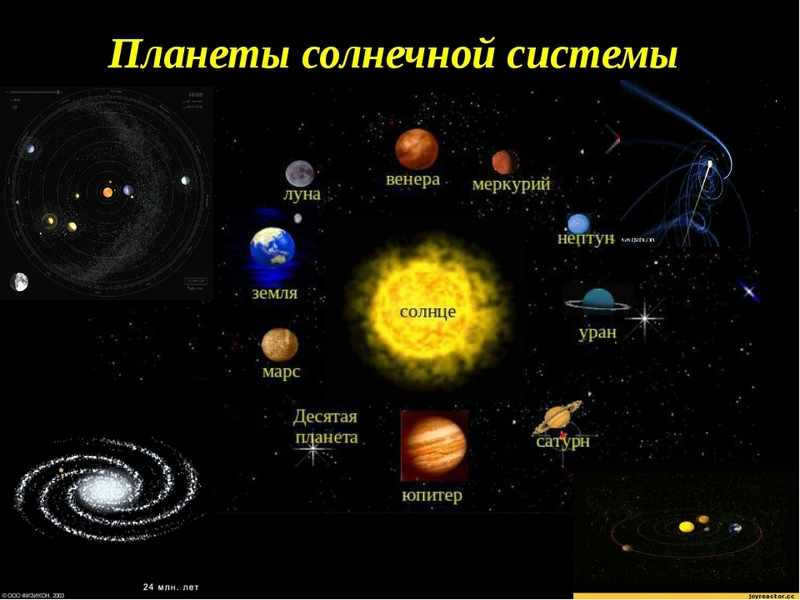
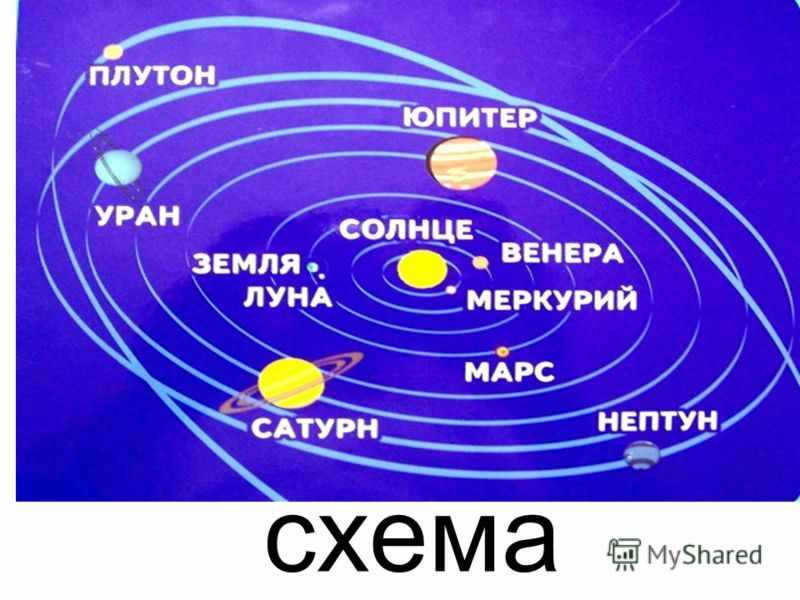
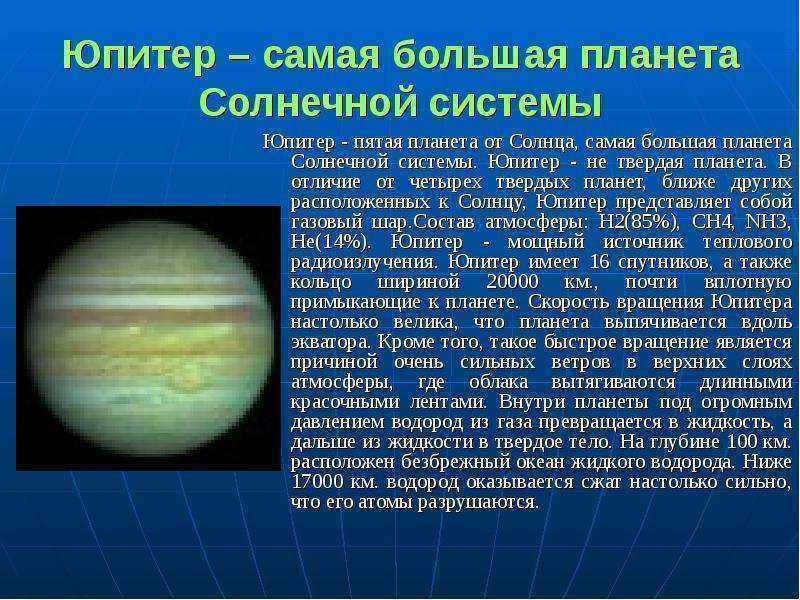
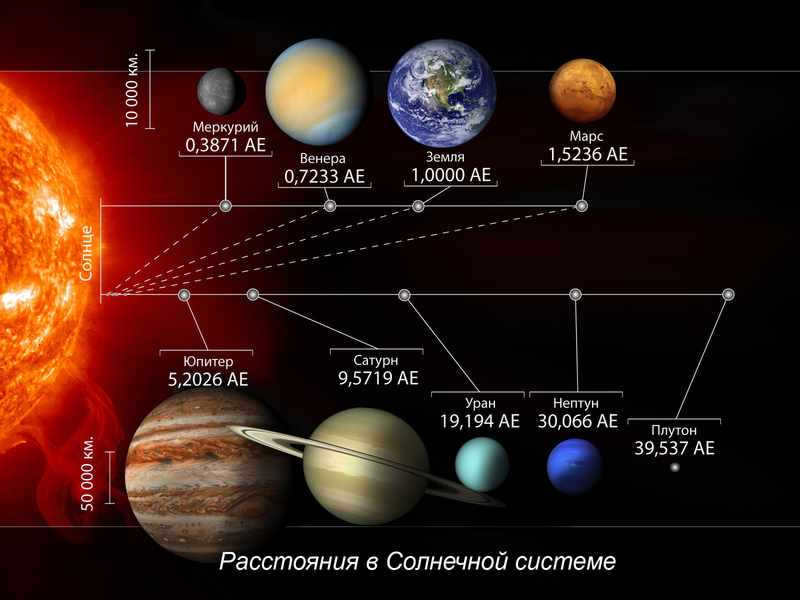
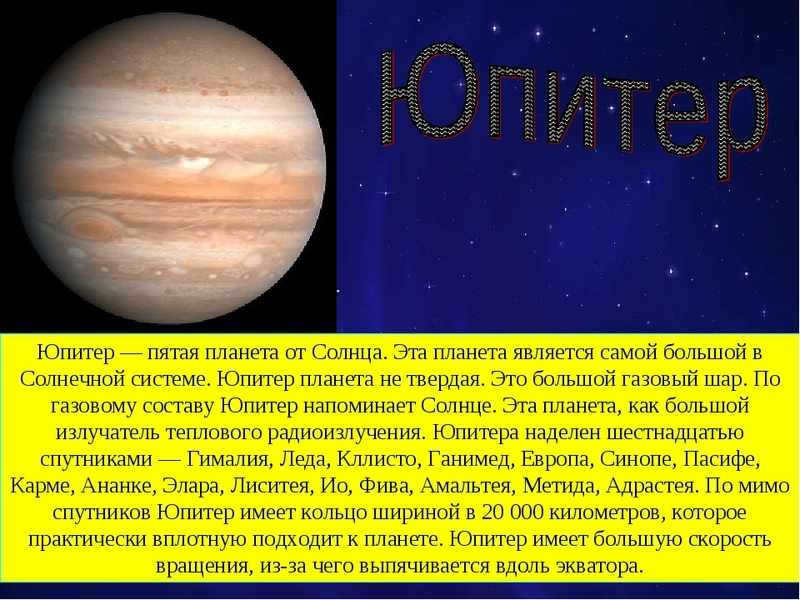
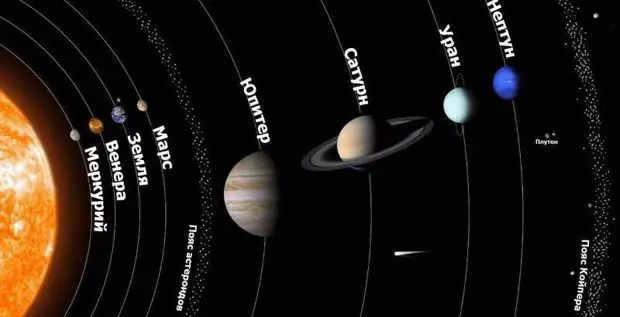
It is a well-established fact in the field of science that our solar system is composed of eight planets. These planets can be classified into two main groups based on their location and size. The outer group consists of Neptune, Uranus, Saturn, and Jupiter, which are known for their massive size and their position further away from the sun. On the other hand, the inner group is made up of Mars, Earth, Venus, and Mercury, which are closer to the sun and are often referred to as terrestrial planets.
Pluto
Until 2006, Pluto was recognized as a planet within our solar system, but extensive exploration of outer space has led to a reevaluation of this celestial object. It has now been reclassified as the largest object in the Kuiper belt and is referred to as a dwarf planet. Discovered by mankind in 1930, it owes its name to Venetia Bernie, a young student from Oxford. Through a vote among astronomers, the decision was made to name the planet after the Roman god associated with the underworld and death – a suggestion made by an eleven-year-old girl.
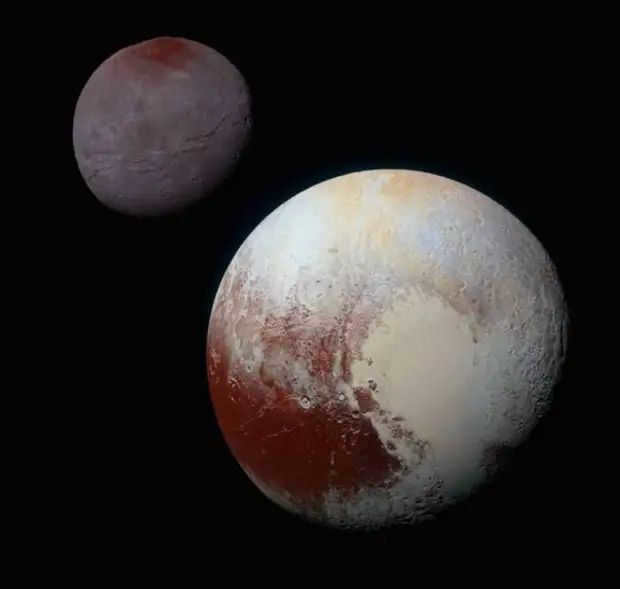
Neptune
Discovered in the mid-19th century (1846) through mathematical calculations by John Couch Adams and Urbain Jean Joseph Leverrier, the existence of this celestial body sparked a debate among astronomers. Each astronomer wanted to have their own surname immortalized in the name of the newly discovered planet. To settle the dispute, a compromise was proposed – the name of the ancient Roman god of the seas.
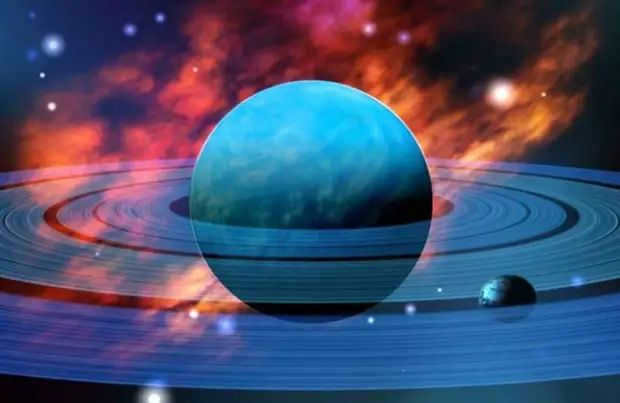

Uranus
Originally, this celestial body had multiple names. It was first discovered in 1781 and named after its discoverer, W. Herschel. The scientist initially wanted to honor the British ruler, George III, but astronomers suggested continuing the tradition of naming planets after deities, like the five most ancient planets. The leading candidate for the name of this cosmic entity was the Greek god of the sky, Uranus.
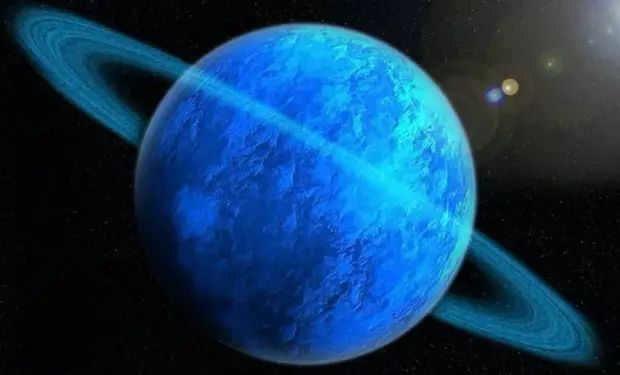

Even before the Christian era, people were aware of the presence of massive planets in our solar system. When it came to naming these celestial bodies, the Romans opted to pay homage to the God of agriculture.
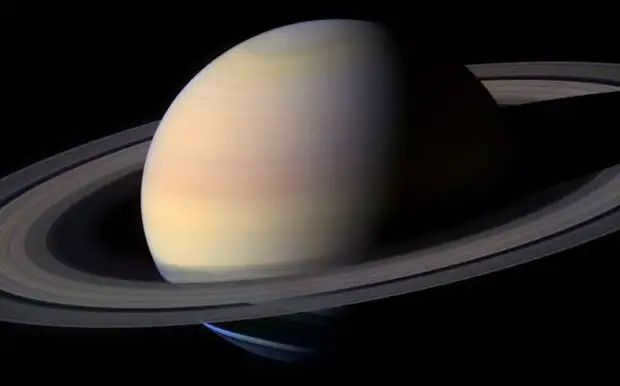
The largest planet in the solar system, Jupiter, gets its name from the Roman supreme god. Due to its enormous size, Jupiter has been visible in the sky for centuries, just like Saturn.
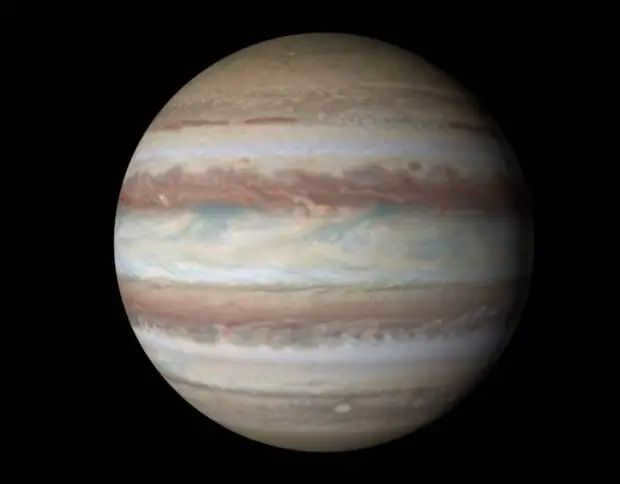

The planet Mars
The distinctive reddish color of the planet’s surface is linked to warfare and bloodshed, which is why it was named after the Roman god of war.
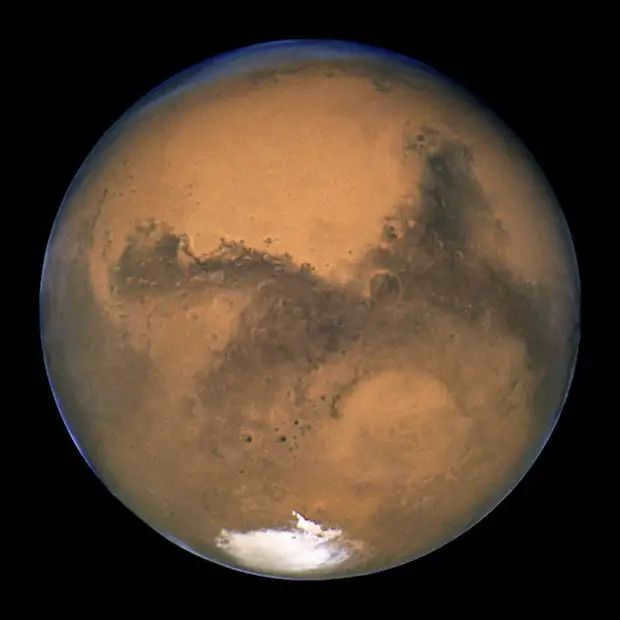
Planet Earth
Little is known about the origins of the name of our home planet. It is widely believed that its name is not rooted in mythology. The earliest recorded mention of the planet’s current name dates back to 1400. It is thought to be derived from the Anglo-Saxon term for soil or ground – “Earth”. However, the exact origins of who first called our planet “earth” remain unknown.
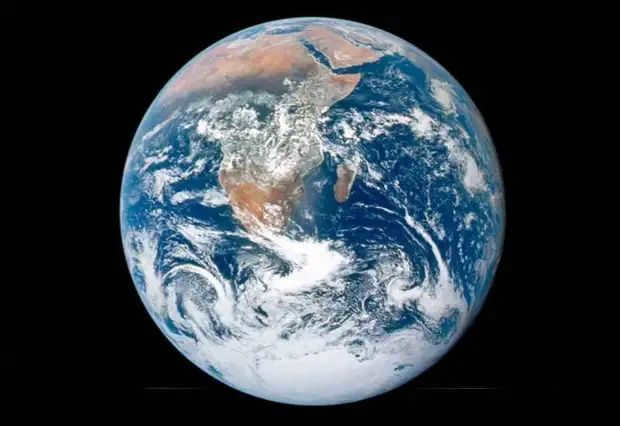
Venus
Ancient Romans associated the brightest object in the sky with Venus, the goddess of beauty and love. Venus is the sole “female” planet in the solar system.
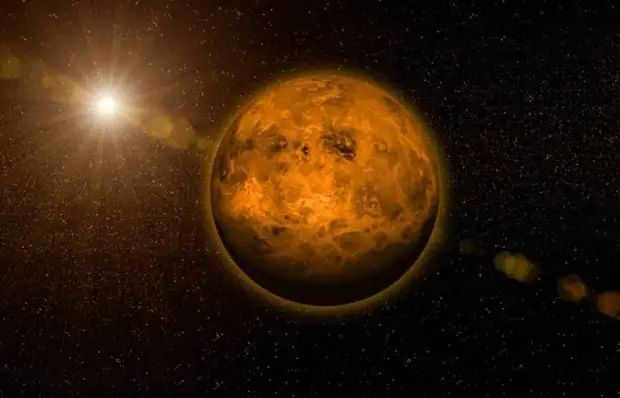

Mercury
Ever since the discovery (around the 14th century B.C.) of the swiftest planet, it has been bestowed with various appellations. Initially, the celestial body closest to the Sun was known as Ninuri. The ancient Greeks referred to it as Stiblon, Apollo, and Hermione. However, it was the Romans who bestowed upon this cosmic entity the name of the god of commerce, thus solidifying the planet’s name for centuries to come.
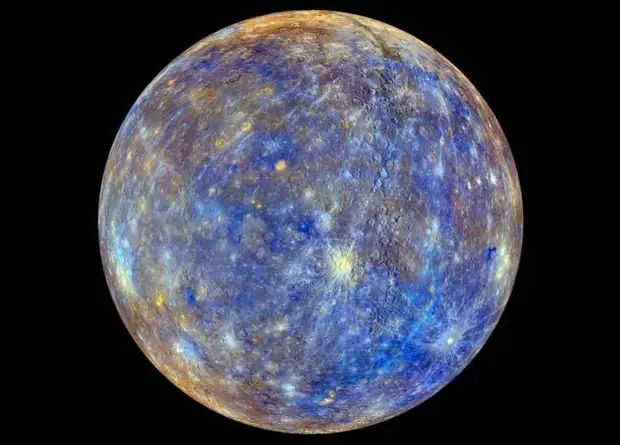

Did you enjoy the article? Be sure to subscribe to the channel to stay updated on the latest fascinating content.


A celestial object that revolves around a star and has a spherical shape without emitting its own light is known as a planet.
According to the International Astronomical Union, certain characteristics must be met for a celestial object to be classified as a planet:
- It must orbit around a star;
- It must have enough mass to maintain hydrostatic equilibrium, which allows gravity to counteract pressure and form a spheroidal structure;
- It must have cleared the path of its orbit, preventing other objects from intruding.
Celestial objects that do not meet these criteria are referred to as asteroids or minor planets. Smaller objects, such as meteors and micrometeorites, are also classified separately.
Our solar system consists of a total of eight planets: Mercury (symbol ☿), Venus (♀), Earth (♁ or ⊕), Mars (♂), Jupiter (♃), Saturn (♄), Uranus (♅), and Neptune (♆).
The term “planet” is derived from the Latin word planet, which, in turn, originates from the Greek word πλανήτης (planets). In Greek, the term “planet” translates to “wanderer” or “wayfarer”.
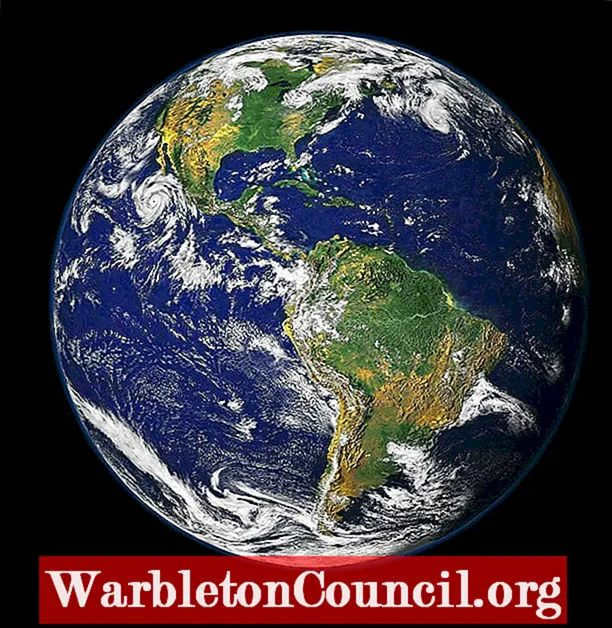
A picture capturing the beauty of planet Earth as seen from the vastness of space.
Distinctive Features of Planets
Aside from the aforementioned conditions, planets possess specific attributes, including their constituent substances, structural composition, orbital paths, and the various movements they exhibit during their celestial journeys.
Planetary Composition
Planets can consist of a combination of solid materials and accumulated gases. The primary solid materials found in planets are silicate rocks and iron. The gases present are primarily hydrogen and helium. Additionally, planets can have various types of ice, including methane, ammonia, carbon dioxide, and water.
The specific proportions and composition of these materials will vary depending on the type of planet. For instance, rocky planets like Earth are primarily composed of rocky and metallic materials, with a smaller amount of gases. On the other hand, gaseous planets like Jupiter are predominantly made up of gases and ice.
Planetary Structure
The composition of planets determines their internal structure. Rocky planets consist of:
- A solid or liquid core, which is made up of multiple solid layers or molten material.
- Mantle: Composed mainly of silicates, which are salts formed by mixing a base with silicic acid.
- Crust: This outer layer covers rocky planets, as well as dwarf planets and satellites like the Moon. It can be continental or oceanic and is chemically distinct from the mantle.
Gaseous planets also have a core, but its exact characteristics have yet to be confirmed. It is believed to be a combination of rock, iron, metallic hydrogen, or ice. However, the majority of their mass is made up of gas or compressed liquid.
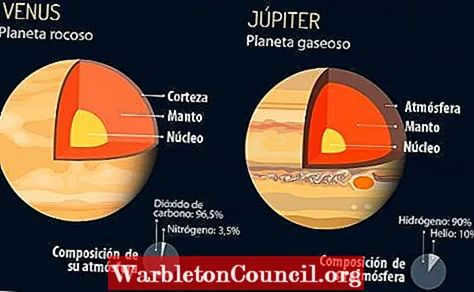
An illustration showcasing the internal composition of a rocky celestial body (Venus) as well as another celestial body primarily composed of gas (Jupiter)
Orbital Trajectories of Planets
All celestial bodies revolve around a central star in an elliptical trajectory. Elliptical trajectory. The velocity of their movement is determined by their distance from the star. The further away they are from the central star, the slower their orbital speed will be.
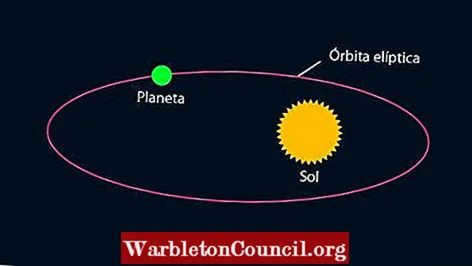
Motions of the planets
The planets exhibit the following movements:
- Translation: This is the displacement around the star.
- Rotation: It is the movement around the planet’s own axis.
- Precession: This refers to the wobbling of a planet’s axis, like the apex when it starts to slow down.
- Nutation: It consists of small oscillations overlaid on the precession motion.
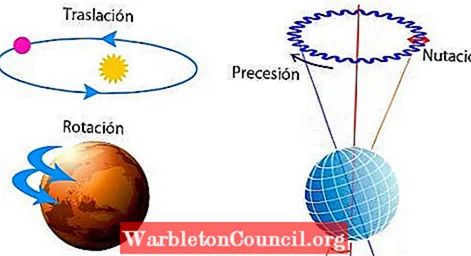

Planet classification
When it comes to our solar system, there are various methods of categorizing the planets. The most prevalent ones include:
- based on their distance from the sun, as inner and outer planets;
- According to their makeup as terrestrial and gas giants.
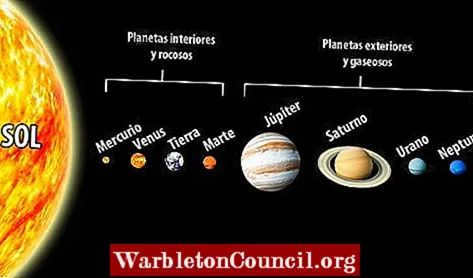
Based on their proximity to the sun.
Terrestrial planetsThe terrestrial planets, often referred to as the inner planets, reside closest to the sun as they are situated before the asteroid belt:
Jovian planetsalso known as the outer planets, are positioned further away from the Sun as they are situated beyond the asteroid belt. Jovian planets:
Classification based on composition
The celestial bodies in the solar system can be classified according to the materials that make up their composition. They can be grouped into two main categories:
Terrestrial planets, also known as rocky or telluric planets, are primarily composed of solid elements such as silicate. Some examples of terrestrial planets include:
Giant planets are mainly composed of gases. They are also referred to as gaseous planets due to their high gas content. These planets are significantly larger and more massive than terrestrial planets. Some examples of giant planets include:
The small planet
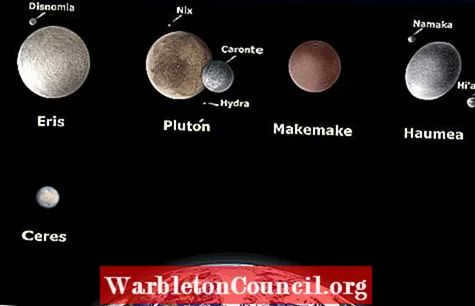

Dwarf planets and their moons
A dwarf planet is a celestial object that meets only two criteria for being a planet:
Dwarf planets are usually smaller than planets but larger than moons.
What sets dwarf planets apart from the major planets is their inability to clear their orbit of other objects.
Currently, there are five officially recognized dwarf planets:
There are over three hundred celestial objects waiting to be classified as dwarf planets.
Exoplanets
Exoplanets, also known as extrasolar planets, refer to planets that revolve around a star other than our Sun. Hence, these are planets located beyond our solar system.
Their official confirmation took place in 1992 thanks to technological progress that facilitated improved space observation.
Currently, there have been 3,264 confirmed exoplanets. The majority of them belong to the category of gas giants.
Categories of exoplanets
There exists a wide range of exoplanets that possess unique characteristics which deviate from the traditional classification system of planets in our own solar system. Among these, there are five primary categories:
- Jupiter-like: These are gas giants that can be up to 80 times more massive than Earth. They can be further divided into hot Jupiter and cold Jupiter.
- Neptune-like: These exoplanets are slightly less massive than the Jupiter-like ones, but are always larger than Earth. They can be further divided into hot Neptune and cold Neptune.
- Super Earths: This category comprises of all planets that have a mass 1-10 times greater than Earth’s mass.
- Earth-like: Also known as former Earths, these exoplanets have a mass similar to our own Earth. This category includes a type called minineptune.
- Dungeons: Its mass is smaller than that of Earth or Venus.
There are also various uncommon types like pulsar planets, carbon-based planets (carbide or diamond), metazeme planets, chthonic planets, octolumbar planets, and wandering planets (wanderers or orphans). Additionally, there are theories proposing the presence of oceanic planets, lava planets, iron planets, and helium planets.
What is the process of planet formation?
The formation of planets is believed to occur through the condensation of gases and dust that orbit a star over a span of millions of years. This phenomenon is known as the “nebular hypothesis”.
According to this theory, gases and dust particles move around young stars, eventually leading to the accumulation of particles in the surrounding disk.
As a result, planetesimals, which are small globules, are formed. These planetesimals attract more matter and gradually grow into larger objects.
As the central star emits heat and light, the gases are eliminated, allowing solid matter to solidify.
The solar system comprises the central star, the Sun, and various celestial objects that orbit around it.
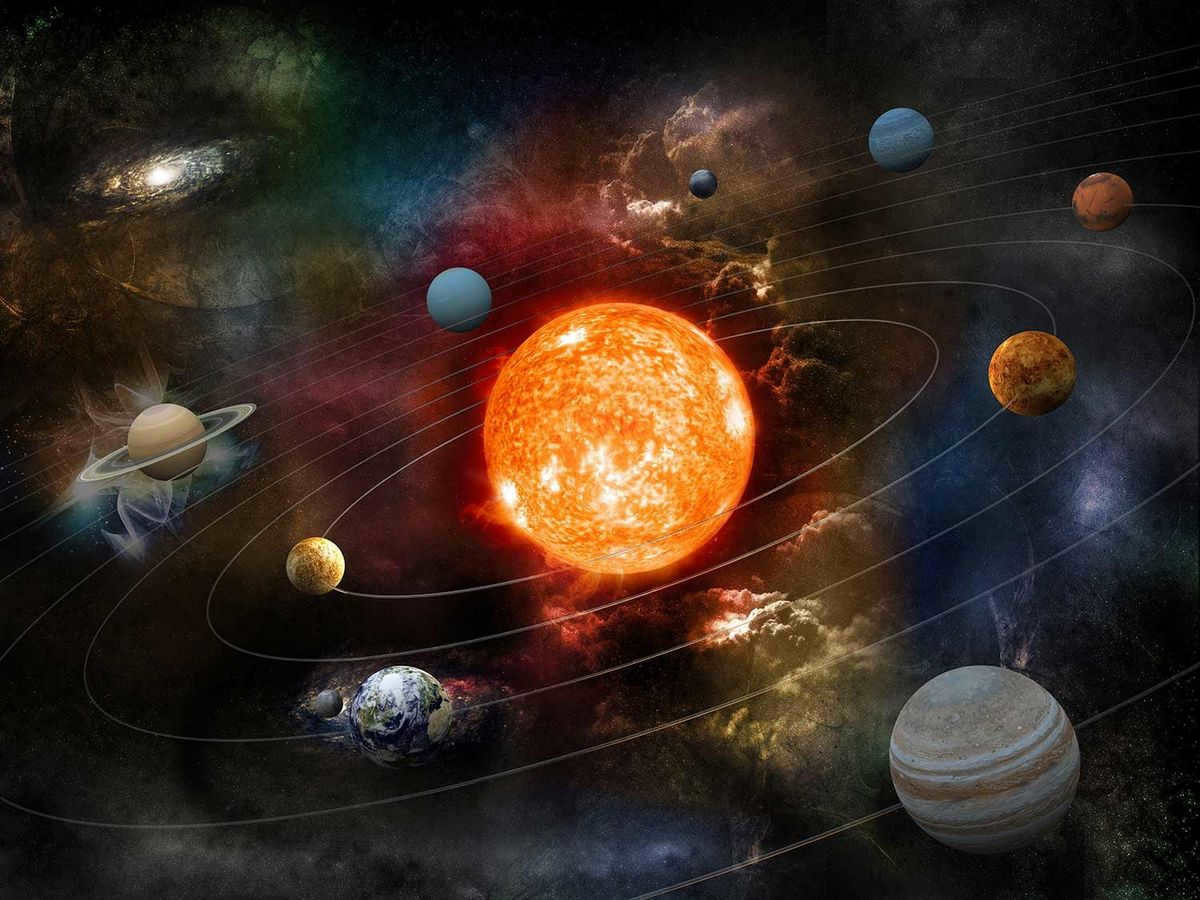

Sun
The Sun is classified as a G2V spectral class main-sequence star, commonly referred to as a yellow dwarf. With an average diameter of 1,392,000 km (equivalent to 109 Earth diameters), it has an absolute magnitude of +4.8. The Sun’s surface temperature can reach up to 6,000 K, while its core temperature is estimated to be around 13.5 million K.
It is estimated that the Solar System takes approximately 200-220 million years to complete one orbit around the galactic center. The Sun is located at a distance of about 26,000 light years from the galactic center, and it travels at a speed of approximately 220-230 km/sec around it.
The Sun contains the vast majority of the mass in the entire Solar System, accounting for about 99.866% of its total mass. This is approximately 750 times the combined mass of all other celestial bodies in the Solar System.
Consequently, the Sun is the central point around which all celestial bodies in our solar system revolve.
The solar system is composed of various structural components, which are as follows:
- The inner planets, also known as the Earth-group planets, orbit the Sun in nearly circular paths.
- Separating the inner planets from the giant planets is the asteroid belt.
- The giant planets possess massive sizes and have dense atmospheres.
- Beyond the orbit of Neptune lies the Kuiper Belt.
- Surrounding the entire solar system and serving as its boundary is the Oort Cloud, a vast collection of individual bodies shaped like a massive sphere. Galactic space begins beyond this cloud.
- The inner planets, also referred to as the terrestrial group planets, consist of Mercury, Venus, Earth, and Mars.
Thus, the Earth-group planets, or inner planets, include Mercury, Venus, Earth, and Mars.
All of these planets possess a high density and solid surfaces, primarily consisting of silicates and metals. The largest planet within this category is Earth. This particular group of planets is situated in close proximity to the Sun.
Asteroid Belt
Located beyond the planets within the Earth group is the asteroid belt, positioned between Mars and Jupiter. This belt serves as a dividing line between the minor planets and the giant planets.
Asteroids share a similar composition to that of the terrestrial planets, as they too are primarily made up of silicates and metals. Asteroids are objects that have a diameter larger than 30 meters, while smaller objects are referred to as meteoroids.
There are only a handful of significant celestial bodies within the asteroid belt. For instance, there are approximately 200 asteroids with sizes exceeding 100 km in diameter and roughly 1,000 asteroids with radii greater than 15 km. Moreover, data obtained from infrared spectroscopy indicates the presence of an estimated 700,000 to 1.7 million additional asteroids measuring at least 1 km in diameter within the primary belt.
Planets outside the asteroid belt
Jupiter, Saturn, Uranus, and Neptune are the four outer planets that lie beyond the asteroid belt. These planets, also known as the giant planets, are part of the second group of planets that are farthest from the Sun. When it comes to size, they are significantly larger than Earth.
Take Jupiter for instance, it is over 300 times more massive than Earth. When the mass of the Sun is subtracted, these planets account for 99% of the remaining mass in the solar system, with Jupiter and Saturn making up the majority at around 90%.
Giant planets have a completely different structure compared to terrestrial planets. Instead of being composed of heavy elements, they consist mostly of gas, primarily hydrogen and helium, similar to the composition of the Sun and other stars. That is why they are also referred to as gas planets.
The Oort cloud, a theoretical spherical area in our solar system, is believed to be the origin of long-period comets.
Although there is no direct evidence of the Oort cloud’s existence, there are several indications that suggest its presence. Scientists estimate that the outer boundaries of the Oort cloud are located approximately 1 to 2 light-years away from the Sun.





